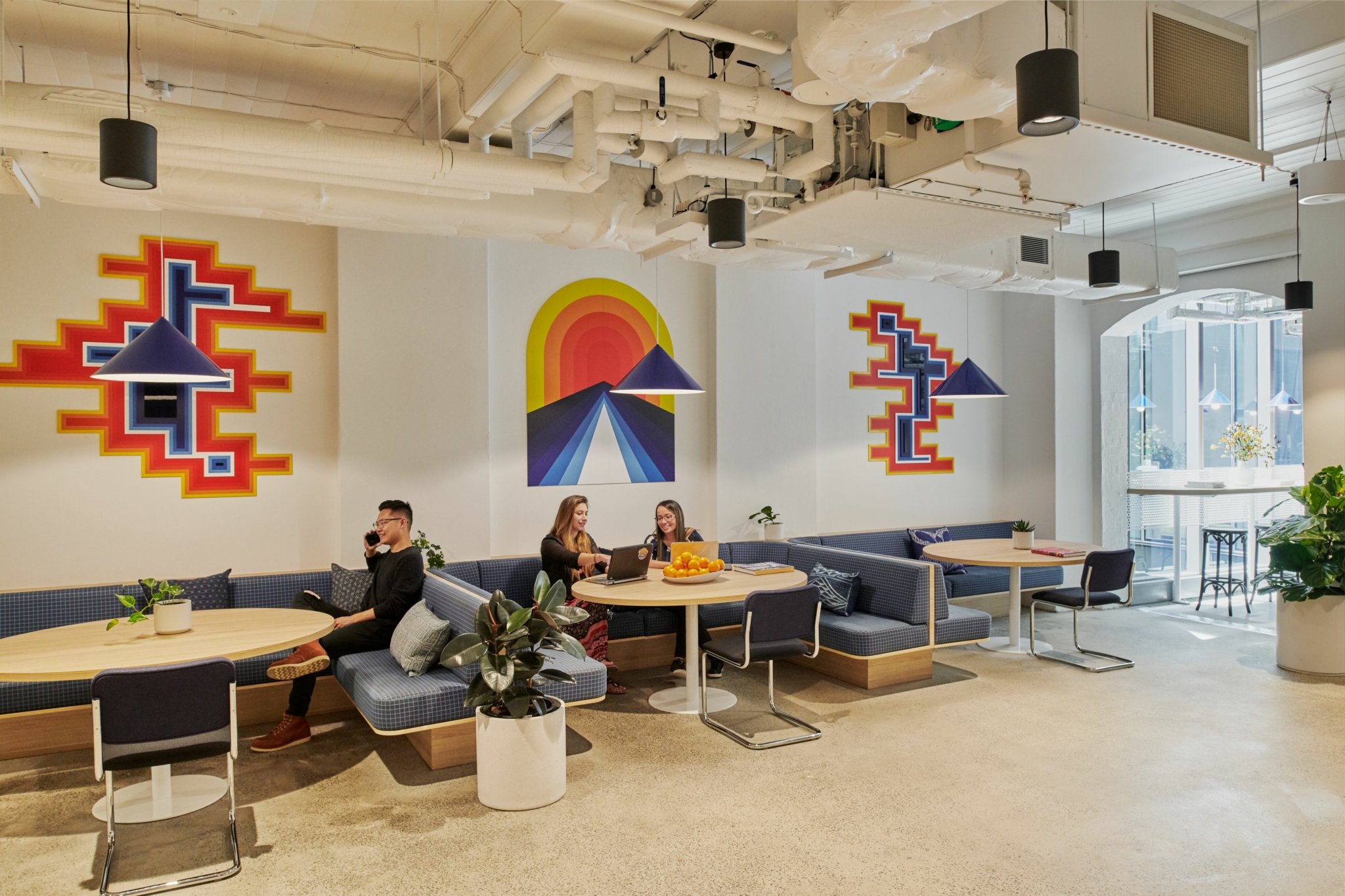Work by the Numbers is a deep-dive into the biggest trends, research and surveys in the world of work and real estate.
While 2020 dramatically upended how we work, 2021 was more of a slow adjustment to a new normal. As the COVID-19 pandemic continues with the added uncertainty of the Delta and Omicron variants and any others that might follow, it’s tough to say what changes to work will stick long-term. But certain trends have emerged that will shape the workplace as we enter 2022.
Some noteworthy indicators: Younger workers and working mothers are struggling. At the same time, well-being and flexibility have emerged as key areas of focus for businesses. Staying on top of these trends, highlighted below, will be critical as companies plan for the future.
1. Gen Z is entering the workforce at a challenging time
Every generation faces its own set of challenges as they enter the workforce, and Gen Z has experienced its fair share during a global pandemic. (Gen Z is roughly defined by those born in 1997 or after.)
Supporting this generation as they take on a larger role in the workplace will be critical. According to a recent study from Adobe, Gen Z will make up 27 percent of the workforce by 2025. While remote work comes with benefits, it can also make some aspects of work challenging. It’s hard to be social with new colleagues or complete onboarding tasks while fully remote. This has a bigger impact on Gen Z because more experienced workers have already developed networking skills and the relationships that younger workers haven’t had the opportunity to build.
This generation also has challenges outside of work. Research from the American Psychological Association found that stress from the pandemic runs much higher in Gen Z than in other generations. And while this generation is set to be the most educated one in history, they also face high levels of student debt. High stress, financial strain, and a lack of connection with the workplace has many younger workers looking for other opportunities. The Adobe study found that 56 percent of Gen Z say they are planning to switch jobs in the next year, and another study from Microsoft found a similar 54 percent, both the highest of any age bracket. Work-life balance, diversity, and opportunities for development and connection are all key priorities for this generation as they navigate an uncertain workplace.
2. Women are leading the great resignation
The pandemic saw 6 million people drop out of the workforce. According to the Bureau of Labor Statistics, 4.4 million workers quit their jobs in September 2021 alone. That same month, the quit rate (the number of quits as a percentage of the total workforce) reached a record high of 3 percent, the highest since this measure started in 2000. While there’s no one reason so many people are leaving their jobs, the exodus seems to be led by women. Data from payroll firm Gusto found that the rate of resignations by women was 1.1 percent higher than that for men. The pandemic appears to have accelerated the trend of women dropping out of the labor force.
The unprecedented challenges and rising costs of childcare during the pandemic could provide some explanation. According to a recent survey from Seramount, nearly one-third of all working mothers say they have scaled back their work or left their jobs entirely to care for their children during the pandemic. A 2020 survey by Catalyst found that 71 percent of working mothers (versus 65 percent of fathers) had to modify their work schedules to accommodate their caregiving responsibilities.
Unfortunately, this elevated burden appears to fall disproportionately hard on working mothers. Companies can’t make these challenges disappear, but offering more remote options and flexible working hours can help parents better balance these responsibilities.
3. Well-being is increasingly in the spotlight
After almost two years spent living through a global pandemic, people continue to struggle with many aspects of their health. In an NPR survey of 3,616 U.S. adults taken after the Delta variant surged late last summer, 38 percent of U.S. households reported facing serious financial difficulty. Half of those surveyed reported that someone in their household struggled with anxiety, stress, depression, or insomnia.
A survey of 1,500 employees by Indeed found that 67 percent reported that burnout increased during the pandemic. Whether or not employees are struggling, well-being is top of mind for most. Employers can’t fully solve the problem, but they help by putting more investment into well-being.
Workplace well-being is a blanket term for all aspects of work life. It includes how employees feel about the physical quality and safety of the workplace, the social environment, and the work they do. A recent survey by Deloitte found that 80 percent of 6,000 global workers said well-being should be a top priority for their employer.
Competitive pay is a cornerstone of workplace well-being. The American Psychological Association found that more than half of employees surveyed said low salaries affect their job performance. But wages are only a part of the story. A survey from LinkedIn found that, in addition to better pay, employees want flexible hours and work locations, better work-life balance, and better benefits, like paid time off and healthcare.
4. Flexibility is here to stay
Flexibility in where and when employees get work done continues to be the defining workplace trend of the past two years, and there’s no sign of that changing in 2022. A study by Workplace Intelligence and WeWork found that 95 percent of U.S. workers want control over when, where, and how they work.
In a study conducted by McKinsey early in 2021, 63 percent of the 5,042 full-time employees surveyed said that they want flexible or remote options to continue, and nearly 30 percent said they would likely leave their jobs if they were forced to return to the office full-time without any flexible options. While most of those people may not actually quit, it shows just how much workers have come to value flexibility. This is one reason so many companies have moved to a hybrid model of working, allowing employees to come into an office when and where they prefer.
Whether it’s younger employees who crave the benefits of in-person mentorship or working parents who need to be able to work from home at a moment’s notice when their child’s school goes remote due to a COVID outbreak, there are many reasons to give all employees the option to craft a work schedule that fits their unique needs.
Flexibility is a smart business move, too. Companies that let their employees work when and where they need to will have an advantage going forward. With a competitive labor market and high levels of stress for employees, it’s more important than ever to listen to employees and support their needs so they can do their best work.
Bradley Little is a writer and video producer based in New York City.
Rethinking your workspace?










